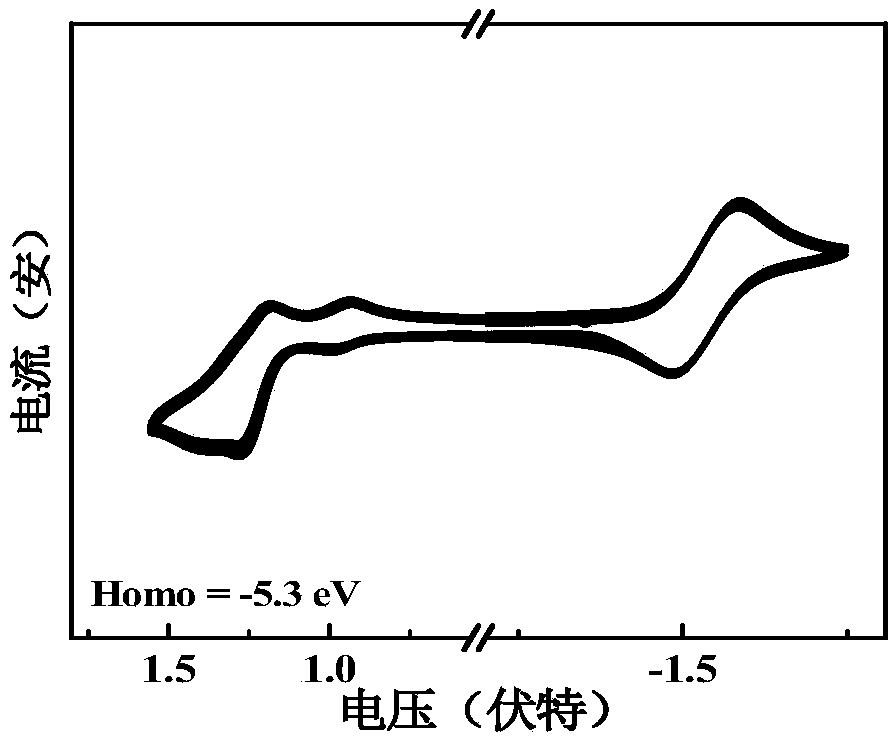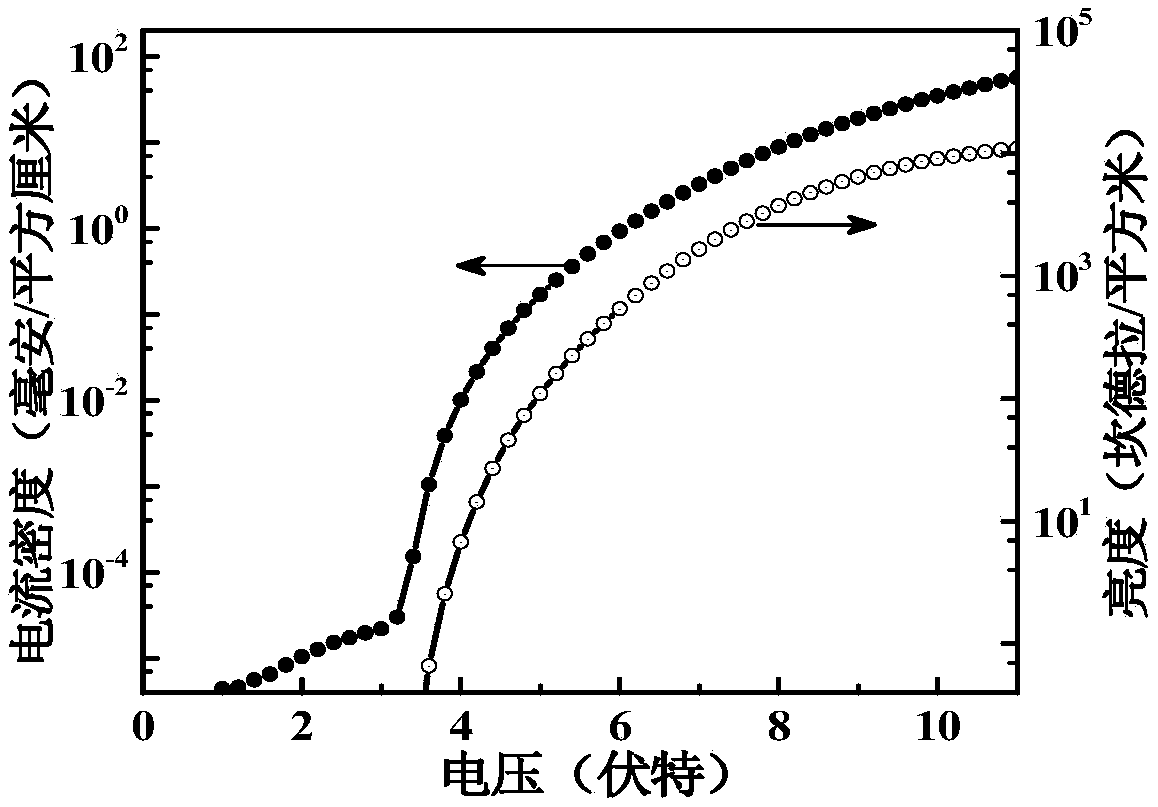Organic small molecular photoelectric functional material adopting 3-benzoylpyridine as receptor unit as well as preparation method and application thereof
A technology of benzoylpyridine and photoelectric functional materials, which is applied in the fields of organic chemistry, silicon organic compounds, chemical instruments and methods, etc., and can solve the problems of stability, weak interaction, and low molecular level orientation of light-emitting materials that affect the anti-intersystem crossing rate and other problems, to avoid the reduction of radiation rate, the horizontal orientation of macromolecules, and the effect of improving horizontal molecular orientation
- Summary
- Abstract
- Description
- Claims
- Application Information
AI Technical Summary
Problems solved by technology
Method used
Image
Examples
Embodiment 1
[0029] The reaction formula of compound P1 is as follows:
[0030]
[0031] Concrete reaction steps are as follows:
[0032] (6-bromopyridin-3-yl) (phenyl) ketone (1.5mmol, 390mg), carbazole (1.6mmol, 270mg), cuprous iodide (0.075mmol, 18mg), 1,10-phenanthro Phenyl (0.075mmol, 11mg) and anhydrous sodium carbonate (3mmol, 415mg) were sequentially added to the reaction flask. After the nitrogen gas was replaced three times, 10 mL of p-xylene was added through a syringe. Reflux reaction at 150° C. for 24 hours under nitrogen atmosphere. After the reaction, the system was returned to room temperature, extracted and washed with dichloromethane and saturated brine. The organic phase was recovered and dried over anhydrous magnesium sulfate, and the solvent was distilled off under reduced pressure. Then the crude product was separated and purified by column chromatography, the eluent was petroleum ether / dichloromethane 3:1, and the compound P1 product was finally obtained with ...
Embodiment 2
[0034] The reaction formula of compound P2 is as follows:
[0035]
[0036] Concrete reaction steps are as follows:
[0037] Compared with Example 1, the difference is that carbazole is replaced by an equivalent amount of diphenylamine, other raw materials and steps are the same as in Example 1, and the compound P2 product is finally obtained with a yield of 75%. Product Molecular Formula: C 24 h 18 N 2O; molecular weight m / z: 350.16; elemental analysis results: C, 82.26; H, 5.18; N, 7.99; O, 4.57.
Embodiment 3
[0039] The reaction formula of compound P3 is as follows:
[0040]
[0041] Concrete reaction steps are as follows:
[0042] Compared with Example 1, the difference is that carbazole is replaced by an equivalent amount of phenoxazine, and other raw materials and steps are the same as in Example 1, and the compound P3 product is finally obtained with a yield of 73%. Product Molecular Formula: C 24 h 16 N 2 o 2 ; Molecular weight m / z: 365.16; Elemental analysis results: C, 79.11; H, 4.43; N, 7.69; O, 8.78.
PUM
| Property | Measurement | Unit |
|---|---|---|
| current efficiency | aaaaa | aaaaa |
| external quantum efficiency | aaaaa | aaaaa |
Abstract
Description
Claims
Application Information
 Login to View More
Login to View More - R&D
- Intellectual Property
- Life Sciences
- Materials
- Tech Scout
- Unparalleled Data Quality
- Higher Quality Content
- 60% Fewer Hallucinations
Browse by: Latest US Patents, China's latest patents, Technical Efficacy Thesaurus, Application Domain, Technology Topic, Popular Technical Reports.
© 2025 PatSnap. All rights reserved.Legal|Privacy policy|Modern Slavery Act Transparency Statement|Sitemap|About US| Contact US: help@patsnap.com



